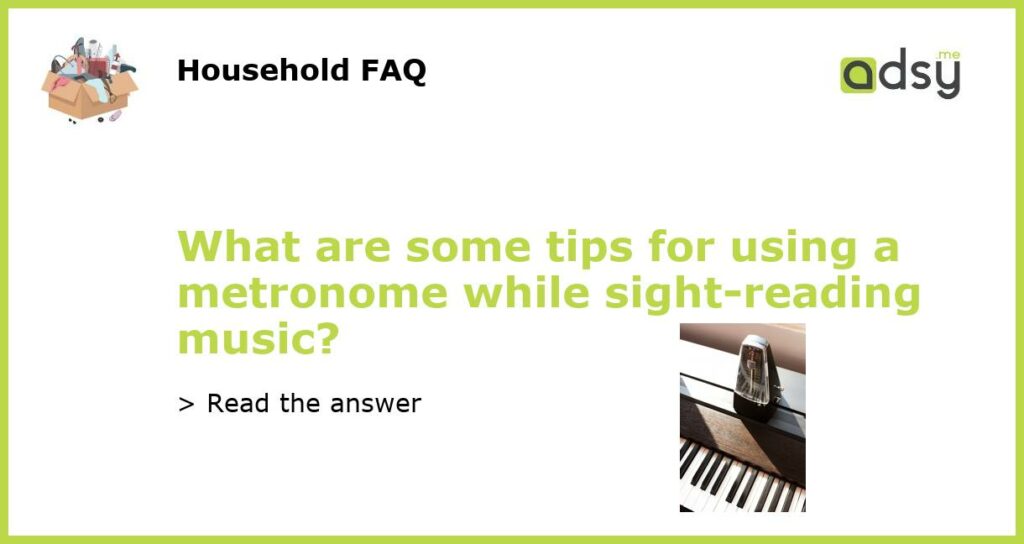Tips for Using a Metronome While Sight-Reading Music
Sight-reading music is a skill that requires a combination of reading sheet music, tempo control, and playing with precision. One tool that can help musicians improve their sight-reading skills is a metronome. However, using a metronome for sight-reading can be challenging, especially for beginners. Here are some tips to help you make the most of your metronome when sight-reading music.
Start Slow
When using a metronome for sight-reading music, you should always start slow. Set the metronome to a speed that is comfortable for you, and make sure that you can play the music accurately at that tempo before increasing the speed. By starting slow, you’ll be able to focus on reading the sheet music and playing with precision, rather than rushing through the piece.
Keep a Steady Beat
One of the advantages of using a metronome is that it helps you keep a steady beat. However, many musicians struggle to follow the metronome because they are not used to playing with a consistent tempo. To get in the habit of playing with a steady beat, practice playing simple rhythms with the metronome. Start with a slow tempo and gradually increase the speed as you become more comfortable.
Focus on Dynamics
Using a metronome for sight-reading can sometimes make the music sound robotic and mechanical. To avoid this, focus on adding dynamics to the music. This means playing certain notes louder or softer than others. By adding dynamics, you’ll be able to make the music more expressive and interesting, while still maintaining a steady tempo.
Practice, Practice, Practice
As with any new skill, using a metronome for sight-reading music takes practice. Set aside time each day to practice with the metronome, starting with simple pieces and gradually moving on to more complex music. By practicing regularly, you’ll be able to improve your sight-reading skills and become a better musician.






